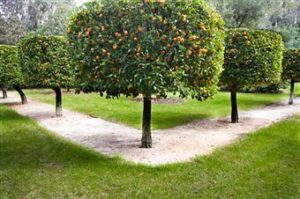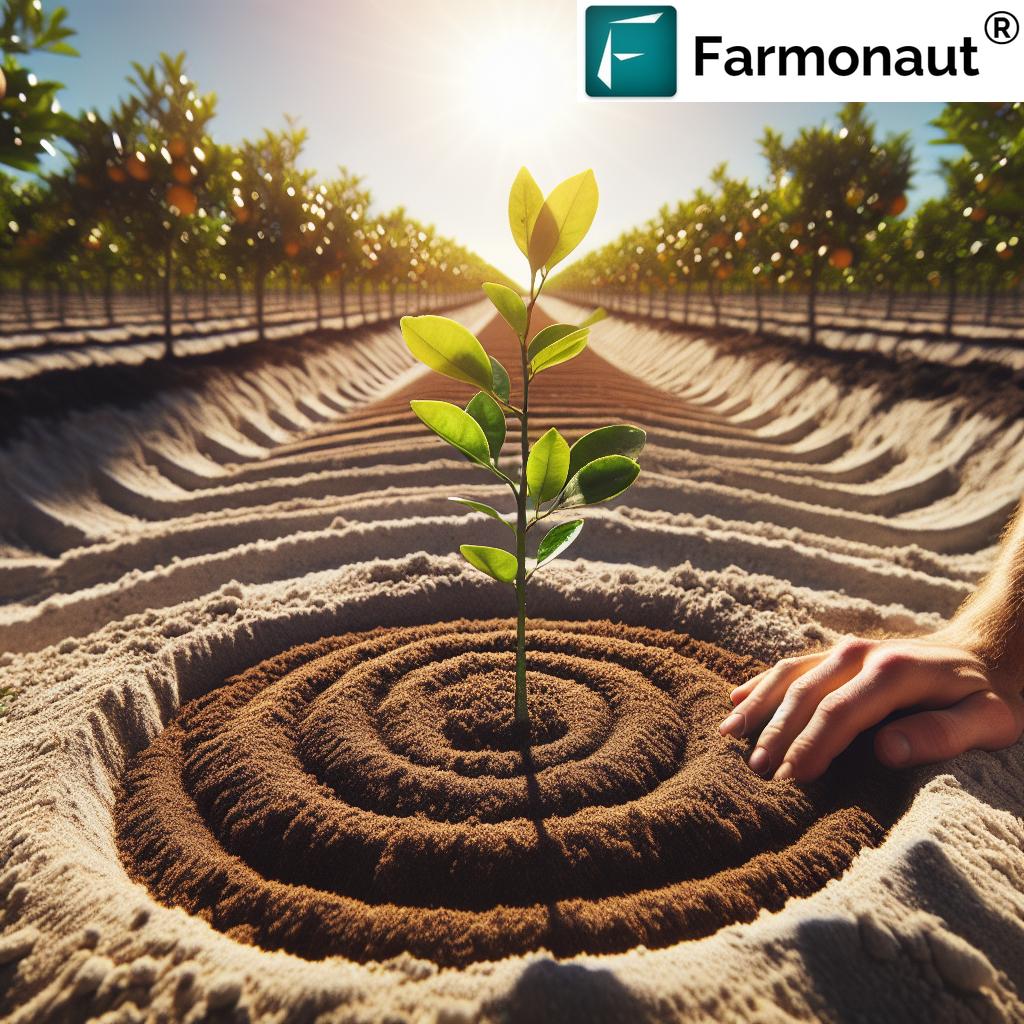If you’re thinking about adding a lemon tree to your Florida garden, you might wonder which variety will thrive best in the Sunshine State’s unique climate. Choosing the right lemon tree isn’t just about picking any lemon—it’s about finding the perfect match for your space, soil, and taste buds.
Imagine enjoying fresh, juicy lemons from your own backyard, whether for cooking, refreshing drinks, or simply the joy of gardening. You’ll discover the best lemon trees to plant in Florida, what makes each variety special, and tips to help your tree flourish year after year.
Ready to grow your own slice of sunshine? Let’s dive in!
Top Lemon Varieties For Florida
Choosing the right lemon tree variety is key for a thriving Florida garden. The state’s warm climate suits several lemon types. Each variety offers unique traits that gardeners appreciate. Below are the top lemon varieties for Florida that grow well and produce tasty fruit.
Meyer Lemon Traits
Meyer lemons have a sweeter taste than regular lemons. They are smaller and rounder with thin, smooth skin. These lemons have a hint of orange flavor from their mandarin hybrid. Meyer trees handle Florida’s mild winters well. They produce fruit year-round in warm areas. Their fragrance is strong and pleasant. Gardeners like them for desserts and fresh drinks. The tree grows compact and suits small spaces.
Eureka Lemon Traits
Eureka lemons are the classic lemon type. They have a bright yellow color and thick, textured skin. The flavor is tart and sharp, perfect for cooking and lemonade. Eureka trees grow tall and vigorous. They produce large lemons most of the year. These trees need full sun and well-drained soil. Eureka lemons are common in Florida home gardens. Their fruit stores well and has a strong citrus scent.
Comparing Meyer And Eureka
Meyer lemons are sweeter and smaller than Eureka lemons. Eureka lemons have thicker skin and a more tart taste. Meyer trees are smaller and better for limited space. Eureka trees grow larger and need more room. Both varieties thrive in Florida’s climate with care. Meyer is great for fresh eating and desserts. Eureka suits savory dishes and traditional lemon uses. Choose based on taste preference and garden space.

Credit: www.mulchandsod.com
Climate Needs In Florida
Florida’s climate suits lemon trees well but has unique challenges. Warm temperatures and humidity help lemons thrive. Still, sudden cold snaps and strong winds can harm young trees. Understanding Florida’s climate needs aids in growing healthy lemon trees. Protecting your tree and choosing the right time to plant make all the difference.
Ideal Planting Seasons
Plant lemon trees in Florida during warm months. The best time is from July to October. Soil is warm enough for roots to grow fast. Avoid planting in winter when cold can damage trees. Early fall planting lets trees settle before cooler weather arrives.
Sunlight And Wind Protection
Lemon trees need full sunlight for at least six hours daily. Choose a spot with good sunlight exposure. Strong winds can break branches and dry out leaves. Use fences or walls to block harsh winds. Wind protection helps the tree grow strong and healthy.
Cold Hardiness Tips
Lemon trees are sensitive to cold temperatures below 28°F (-2°C). Cover trees with frost cloths during cold nights. Mulch around the base to keep roots warm. Plant lemon trees in sheltered areas to reduce cold damage. Young trees need extra care during winter months.
Planting And Care Tips
Planting and caring for a lemon tree in Florida requires attention to key details. Proper location, soil, and watering practices help your tree thrive. Protecting the tree from pests and diseases keeps it healthy and productive. Follow these simple tips to grow a strong lemon tree that suits Florida’s climate well.
Choosing The Right Location
Pick a spot with full sun, at least six hours daily. Good air circulation reduces disease risk and encourages growth. Avoid low areas where water collects, as lemon trees dislike soggy roots. A location near a wind barrier, like a fence or wall, helps protect young trees. Space trees at least 12 feet apart to give them room to grow.
Soil And Watering Guidelines
Use well-draining soil with a slightly acidic pH between 5.5 and 6.5. Sandy loam soils work best in Florida. Water newly planted trees deeply once or twice weekly. Mature trees need less frequent watering but ensure the soil stays moist. Avoid overwatering to prevent root rot. Mulch around the base to retain moisture and control weeds.
Pest And Disease Management
Regularly inspect leaves and fruit for pests like aphids, scale, and citrus leaf miners. Use insecticidal soap or neem oil if infestations appear. Prevent fungal diseases by keeping the tree dry and pruning crowded branches. Remove any dead or diseased limbs promptly. Healthy trees resist pests and diseases better, so maintain proper care routines.

Credit: theprudentgarden.com
Harvesting And Usage
Harvesting lemons at the right time ensures the best flavor and juiciness. Proper usage of lemons from your tree adds fresh zest to many dishes and drinks. Each lemon variety has unique qualities that suit different culinary needs.
When To Pick Lemons
Pick lemons when they turn bright yellow or yellow-orange. The fruit should feel firm but slightly soft to the touch. Avoid green lemons as they taste bitter and sour. Harvest by gently twisting or cutting the stem to avoid damage. Check your tree regularly during the peak season for the freshest lemons.
Culinary Uses For Meyer Lemons
Meyer lemons have a sweeter and less acidic taste than other lemons. Use them in desserts like lemon bars, cakes, and sorbets for a floral flavor. Their thin skin makes zesting easy and flavorful. Meyer lemons also enhance drinks such as lemonade and cocktails. Try them in salad dressings or sauces for a mild citrus touch.
Culinary Uses For Eureka Lemons
Eureka lemons offer a classic tart and tangy flavor with thicker skin. They work well in savory dishes like marinades, dressings, and sauces. Use Eureka lemons in homemade lemonade for a bright, refreshing taste. Their juice is perfect for preserving or adding acidity to recipes. The peel can be candied or grated for extra zest in cooking and baking.
Growing Lemons In Containers
Growing lemons in containers is a smart choice for Florida gardeners. It allows control over soil, water, and sun exposure. Container lemon trees can thrive on patios, balconies, or small yards. They are perfect for people with limited space or those who want to move plants indoors during cold snaps. Container gardening also makes pest control easier and reduces the risk of soil diseases. This method brings fresh lemons closer to home with less effort and space.
Best Container Types
Choose containers with good drainage holes to prevent waterlogging. Terra cotta pots are popular because they breathe well and keep roots cool. Plastic containers are lightweight and retain moisture longer. Wooden planters offer natural insulation but must be treated to avoid rot. The container should be at least 18 to 24 inches deep and wide. This size allows roots to spread and supports healthy growth. Make sure the container has enough space to hold rich, well-draining soil.
Care For Container Trees
Water lemon trees regularly, keeping soil moist but not soggy. Use a balanced fertilizer designed for citrus trees every few weeks. Check for pests like aphids or scale insects and treat early. Prune branches to maintain shape and improve air circulation. Place containers where they receive six to eight hours of sunlight daily. Protect trees from strong winds and cold temperatures by moving containers indoors or to sheltered spots. Refresh the soil yearly to supply nutrients and encourage growth.
Benefits Of Container Growing
Container lemon trees need less space than ground planting. They are easier to manage for watering and feeding. Mobility allows protection from extreme weather or pests. Growing in containers reduces soil-borne diseases and root problems. Containers can brighten small areas like balconies or patios with greenery and fruit. This method suits Florida’s climate, giving gardeners flexibility and more control. It makes lemon growing possible for anyone, even without a yard.

Credit: farmonaut.com
Frequently Asked Questions
What’s The Best Lemon Tree To Grow In Florida?
The Meyer lemon tree is best for Florida. It thrives in warm climates, produces sweet, thin-skinned fruit, and suits home gardens well.
When’s The Best Time To Plant A Lemon Tree In Florida?
The best time to plant a lemon tree in Florida is between July and October. Choose a sunny spot with some wind protection. This timing helps the tree establish before cooler months and promotes healthy growth.
Which Is Better, Meyer Or Eureka Lemon?
Meyer lemons are sweeter with thinner skin, ideal for desserts and drinks. Eureka lemons are larger, tart, and better for savory dishes. Choose Meyer for sweetness; pick Eureka for classic lemon flavor. Both suit different culinary uses and grow well in warm climates.
How Long Does It Take For A Lemon Tree To Bear Fruit In Florida?
A lemon tree in Florida typically bears fruit within 2 to 3 years after planting. Proper care and climate speed up fruiting.
Conclusion
Choosing the best lemon tree for Florida helps ensure a healthy, fruitful garden. Meyer lemon suits warmer areas with its sweet, thin-skinned fruit. Eureka lemon offers classic tartness and works well in cooking. Plant trees in sunny spots with some wind protection for best growth.
Water regularly and protect from cold snaps during winter. Growing lemon trees brings fresh, homegrown citrus to your kitchen. Start today and enjoy the bright flavors Florida gardens can offer.
